Phân tích SWOT là gì?
Phân tích SWOTlà một kỹ thuật được phát triển tại Stanford vào những năm 1970, thường được sử dụng tronglập kế hoạch chiến lược. SWOT là viết tắt củaSức mạnh, Yếu điểm, Cơ hội, và Th загроза và là một phương pháp lập kế hoạch có cấu trúc đánh giá bốn yếu tố đó của một tổ chức, dự án hoặc doanh nghiệp.
Phân tích SWOT là một khung đơn giản nhưng mạnh mẽ để tận dụng sức mạnh của tổ chức, cải thiện điểm yếu, giảm thiểu mối đe dọa và tận dụng tối đa các cơ hội.
- Phân tích SWOT là một quá trình mà đội ngũ quản lý xác định các yếu tố nội bộ và bên ngoài sẽ ảnh hưởng đến hiệu suất tương lai của công ty.
- Nó giúp chúng ta xác định những gì đang xảy ra bên trong và bên ngoài, để bạn có thể lập kế hoạch và quản lý doanh nghiệp của mình một cách hiệu quả và hiệu suất nhất.
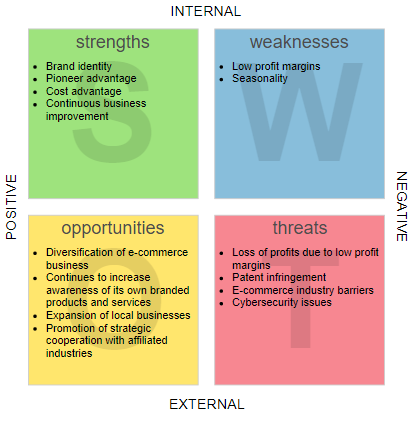
Chỉnh sửa mẫu phân tích SWOT ở trên trực tuyến
Phân tích TOWS là gì?
Phân tích TOWS là một biến thể của công cụ kinh doanh cổ điển, Phân tích SWOT được tạo ra bởiHeinz Weihrich.Nó là một biến thể của công cụ kinh doanh cổ điển, Phân tích SWOT. Cả TOWS và SWOT đều có cùng các chữ cái đầu cho Sức mạnh, Điểm yếu, Cơ hội và Mối đe dọa, và theo thứ tự ngược lại của các từ.
Phân tích TOWS trước tiên kết hợp các yếu tố nội bộ với các yếu tố bên ngoài để giúp xác định các tùy chọn chiến lược liên quan mà một tổ chức có thể theo đuổi. Bằng cách kết hợp các cơ hội và mối đe dọa từ môi trường bên ngoài với sức mạnh và điểm yếu của tổ chức nội bộ, chúng ta có thể đưa ra bốn chiến lược cơ bản. Nó có thể giúp một tổ chức thấy cách mà nó có thể tận dụng các cơ hội, giảm thiểu mối đe dọa, vượt qua điểm yếu và khai thác bất kỳ sức mạnh nào.
Bốn chiến lược TOWS
Kết quả là, bạn cấu trúc suy nghĩ của mình để bao quát tất cả các khía cạnh chiến lược với các mục hành động tương ứng:
Sức mạnh/Cơ hội (SO):
Xem xét tất cả các sức mạnh một cách riêng lẻ được liệt kê trong Phân tích SWOT với từng cơ hội để xác định cách mà mỗi sức mạnh nội bộ có thể giúp bạn tận dụng từng cơ hội bên ngoài.
Sức mạnh/Mối đe dọa (ST):
Xem xét tất cả các sức mạnh một cách riêng lẻ được liệt kê trong Phân tích SWOT với từng mối đe dọa để xác định cách mà mỗi sức mạnh nội bộ có thể giúp bạn tránh khỏi mọi mối đe dọa bên ngoài.
Điểm yếu/Cơ hội (WO):
Xem xét tất cả các điểm yếu một cách riêng lẻ được liệt kê trong Phân tích SWOT với từng cơ hội để xác định cách mà mỗi điểm yếu nội bộ có thể được loại bỏ bằng cách sử dụng từng cơ hội bên ngoài.
Điểm yếu/Mối đe dọa (WT):
Xem xét tất cả các điểm yếu một cách riêng lẻ được liệt kê trong Phân tích SWOT với từng mối đe dọa để xác định cả hai có thể được tránh.
Bốn ô bên trong Ma trận đại diện cho những gì xảy ra khi các nhãn cột và hàng tương ứng kết hợp với nhau.
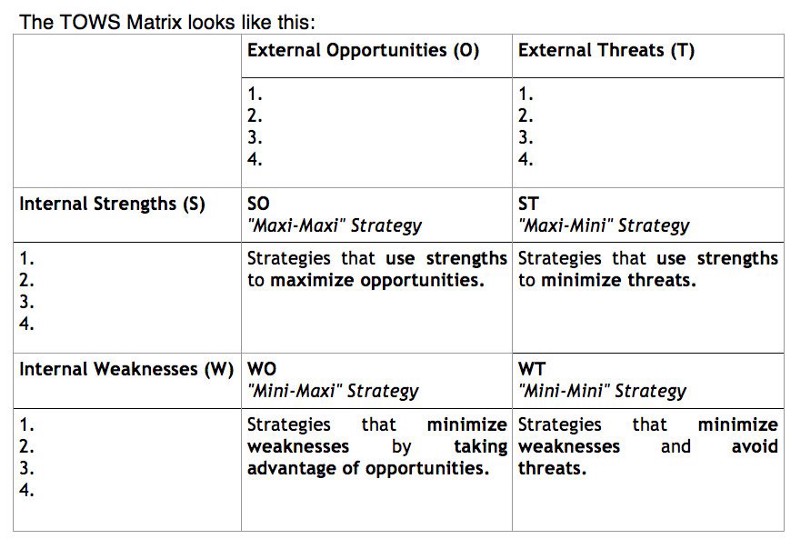
Phân tích TOWS so với SWOT
SWOTma trận là một công cụ lập kế hoạch, trong khi ma trận TOWS là một công cụ hành động. Trong phân tích SWOT, bạn xác định tất cả các Sức mạnh, Điểm yếu, Cơ hội và Mối đe dọa dưới dạng điểm. Sau đó, bạn nghĩ về từng điểm như một góc nhìn riêng lẻ.
Trong khi đó, TOWSma trận xác định các mối quan hệ giữa các yếu tố này và lựa chọn các chiến lược dựa trên chúng. Sức mạnh và điểm yếu là những khái niệm trừu tượng có thể khó nghĩ đến nếu không có bất kỳ bối cảnh nào.
Ví dụ, bạn kết nối các điểm nội bộ (Sức mạnh và Điểm yếu) với các điểm bên ngoài (Cơ hội và Mối đe dọa) để tìm ra kế hoạch hành động như được thể hiện trong Hình dưới đây:
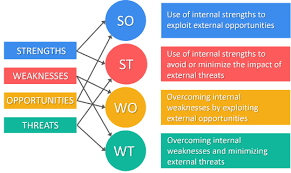
Xem xét tất cả các điểm yếu một cách riêng lẻ được liệt kê trong Phân tích SWOT với từng mối đe dọa để xác định cả hai có thể được tránh.
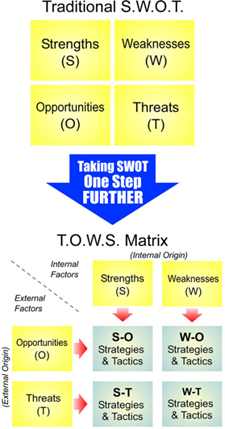
Bắt đầu với Phân tích SWOT và TOW bằng Công cụ Trực tuyến Miễn phí?
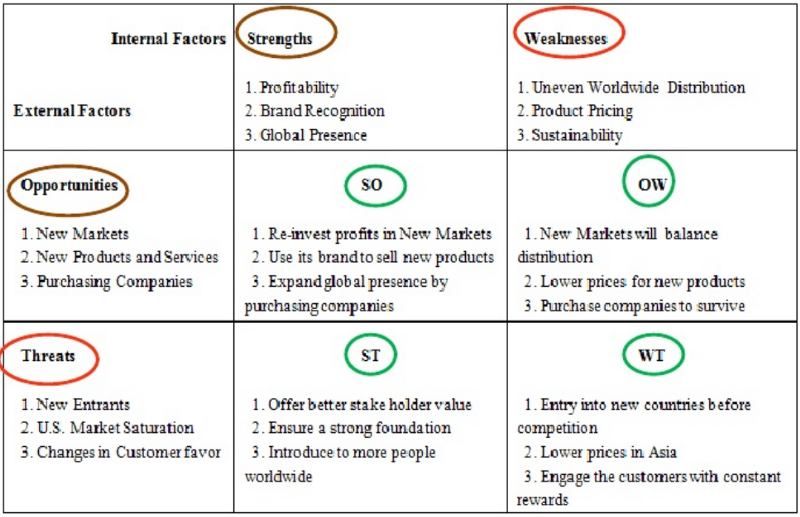
Càng có nhiều kinh nghiệm trong phân tích TOWS, bạn và đội ngũ của bạn sẽ càng dễ dàng nghĩ ngay đến sức mạnh và điểm yếu dưới góc độ cơ hội và mối đe dọa.
Mẫu phân tích TOWS Tự làm
Càng có nhiều kinh nghiệm trong phân tích TOWS, bạn và đội ngũ của bạn sẽ càng dễ dàng nghĩ ngay đến sức mạnh và điểm yếu dưới góc độ cơ hội và mối đe dọa.
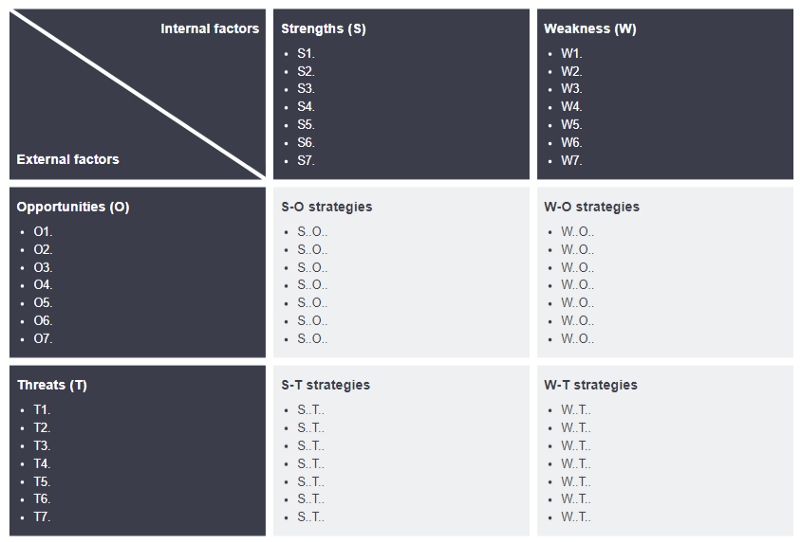
Chỉnh sửa mẫu TOWS ở trên trực tuyến
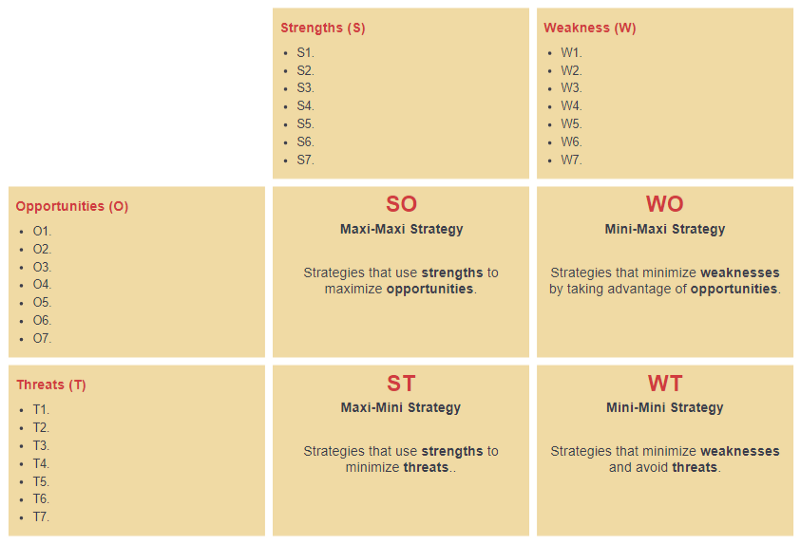
Chỉnh sửa mẫu TOWS ở trên trực tuyến
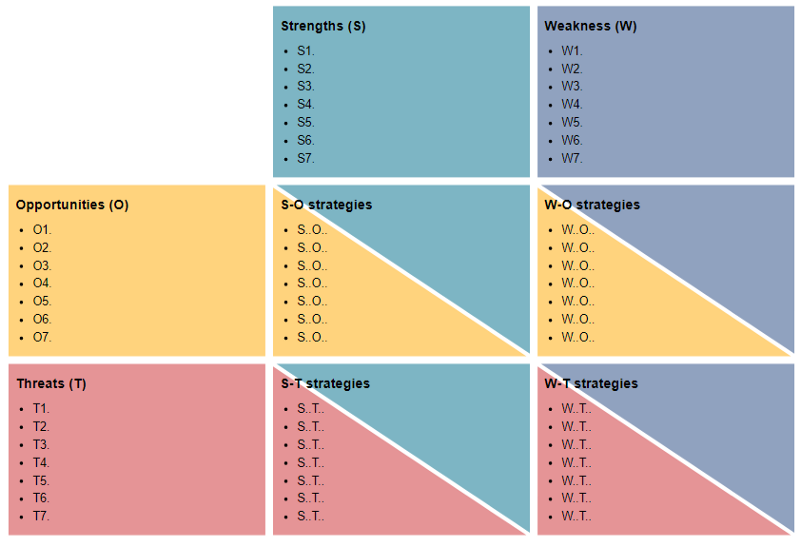
Chỉnh sửa mẫu TOWS ở trên trực tuyến
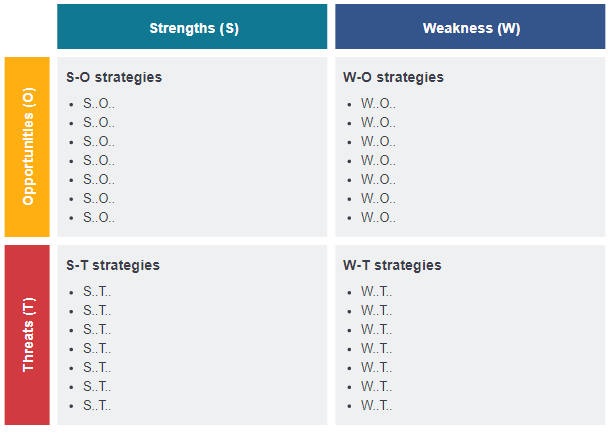
Chỉnh sửa mẫu TOWS ở trên trực tuyến
This post is also available in Deutsch, English, Español, فارسی, Français, Bahasa Indonesia, 日本語, Polski, Portuguese, Ру́сский, 简体中文 and 繁體中文.













